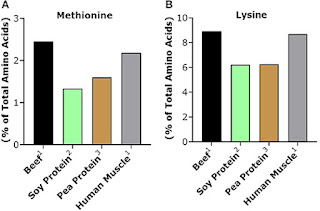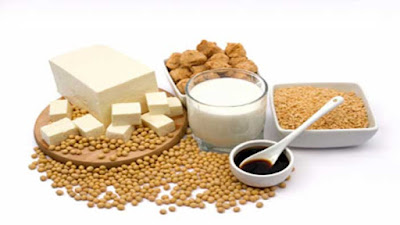1. Background to the issue – the basis of hormone therapy (HRT)
2. Current thinking on HRT:
· What the science and scientists say – is HRT right for
you?
· Scientific studies: - Million Women Study (MWS) – a UK study
-
Women’s Health Initiative
(WHI) – a US study
3. The complexity of HRT risk and NICE guidelines on HRT prescribing
4. Summary - is HRTsafe?
5. What are the natural alternatives to HRT?
Background to the issue
- relieving menopausal symptoms
- preventing osteoporosis
- preventing heart disease (not all studies confirmed its benefits)
Q. where does the evidence come from?
· WHI (Women’s Health Initiative) Hormone Replacement Study
American trials designed to study CV risk
· MWS (Million Women Study)
A UK
Study designed to investigate the risk of breast cancer in women using
different types of HRT
Findings from these studies (2002)
1. Little to no evidence if reduced risk of heart disease. In fact, there was evidence for an increased risk of blood clots and stroke.
2. Increased risk of breast and ovarian cancer
3. Most of the effects of HRT (positive and negative) are seen whilst taking HRT and disappear once HRT is stopped.
The WHI study was abruptly halted.
Q. what are the more recent findings?
An 18-year follow-up study of the participants in the WHI study provides more reassurance:
· no greater risk of dying in the subsequent 18 years
that not for those on HRT
· Risks of all-cause mortality, CV mortality or cancer
mortality is NOT associated with HRT
Analysis of the WHI study data focussed on the age of the participants. The findings show that:
· older women were at high risk
· benefits outweighed the risks:
a.
for healthy women
˂ 60 years
b.
within 10 years
of onset of the menopause
· women who started HRT in early menopause tended to live
longer than women who didn’t take HRT (observational study evidence)
Evidence from 30 clinical trials show that:
women
who began HRT before 60 years had 39% lower risk of death than women who
didn’t take HRT (pooled statistical analysis)
Newer formulations* of hormones (since the WHI study began) may further minimise the risks.
*Newer formulations include:
· transdermal oestrogen (patches)
· micronized progesterone
· SSRIs (typically prescribed as antidepressants)
relieve hot flushes and other menopausal symptoms
·
breast cancer
risk is a good example of this complexity
·
risk is greater
for combined HRT (oestrogen-progesterone) than oestrogen-only HRT
·
risks are
greater:
-
for combined HRT
than oestrogen-only HRT
-
when HRT is
started around the time of the menopause rather than later
-
for thinner than
fatter women (BMI is a consideration) because oestrogen is a fat-soluble
hormone so fatter women produce more oestrogen and adding extra oestrogen makes
less of a difference compared to thinner women who have less fat to absorb
circulating oestrogen)
·
HRT-associated
risks for breast cancer ranged from over two-fold increased risk to no added
risk depended on:
a.
type of HRT
b.
timing of use
c.
BMI
·
Differing
patterns of association with different forms of HRT on:
a.
heart disease
b.
stroke
c.
fractures
d.
ovarian cancer
- this is a risky practice because it relies entirely on whether the GP trainer is knowledgeable about menopause and HRT advice
- many GPs have little or no formal menopause education and not familiar with current guidance.
The Verdict: HRT isn’t all bad… nor all good. There are benefits as well as risks.
|
Benefits |
Risks |
|
Relieve symptoms to allow women to function in their
day-to-day lives |
Benefits usually outweigh the risks |
|
Relief of unpleasant symptoms such as: · hot flushes · night sweats · mood swings · vaginal dryness · ↓ sex drive |
HRT is a medicine and comes with SE. Specific SE of oestrogen and progesterone (see
table) |
|
Prevent osteoporosis |
Other risks: ·
breast cancer ·
blood clots ·
heart disease · strokes |
No hysterectomy (uterus present):
Rx oestrogen + progesterone (or progestin*) since progesterone is needed to balance the
effects of oestrogen otherwise the oestrogen can stimulate the growth of the
uterine lining (endometrium) and ↑ the risk of endometrial/uterine cancer
*progestin = synthetic progesterone (progesterone-receptor agonists)
Hysterectomy (uterus absent):
Rx oestrogen only
Recommendations:
·
find the best
product and delivery method that best suits each person
·
minimise the
amount of HRT taken (lowest possible dose)
·
seek regular
follow up care
·
make healthy
lifestyle choices
Weaning off HRT
Gradually decreasing your HRT dose is usually
recommended because it's less likely to cause your symptoms to come back in the
short term.
|
Side effects of oestrogen |
Side effects of progestogen |
|
The main side effects of taking oestrogen
include:
|
The main side
effects of taking progestogen include:
|
|
Any side effects usually improve over time, so it's a
good idea to persevere with treatment for at least 3 months if possible. These side effects will often pass after a few weeks.
To ease side effects, try:
|
As with side effects of oestrogen, these will usually
pass after a few weeks.
If they persist, a GP may recommend switching to a
different way of taking progestogen, changing the medicine you're taking, or
lowering your dose. |
NICE Guidelines for Prescribing HRT (2015)
- contraindications and cautions
- routes of administration
- choice of hormone
- regimen (perimenopausal + menopausal women)
- adverse effects
Women’s Health and the NHS
· Responses from 100,000 women surveyed (call to collect
views made in Spring 2021)
· Part of a wider ‘women’s health strategy’
· More needs to be done to close the ‘gender gap’ in NHS
services
· Sexism/gender inequality blamed for failings around
prescribing of HRT
· Other inequalities around:
-
postcode lottery
for IVF
-
disproportionate ↑ in gynaecological waiting lists
-
failings in HRT
prescribing
- treatment failings in endometriosis
Q. So what are the alternatives?
- Herbal Medicine (instead of HRT, specific herbs/phyto-oestrogens, holistic management address other symptoms
- Massage Therapy especially stress management and sleep
- Practical Measures (Holistic Management):
·
clothing
(layering up)
·
stress management
techniques (eg. yoga, tai-chi, massage, meditation etc..)
·
EOs or wax melts
·
connecting with nature
(eg. gardening, walking in woodland/open spaces etc…)
·
counselling
·
diet (↓caffeine, ↓alcohol,
↑fermented foods)
· exercise (↑resistance training to improve bone/joint health)







